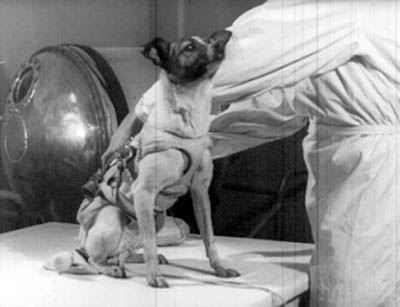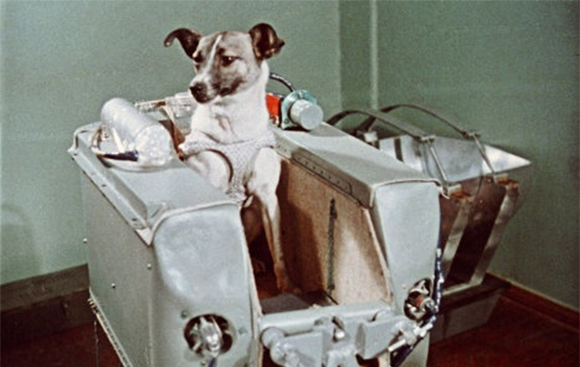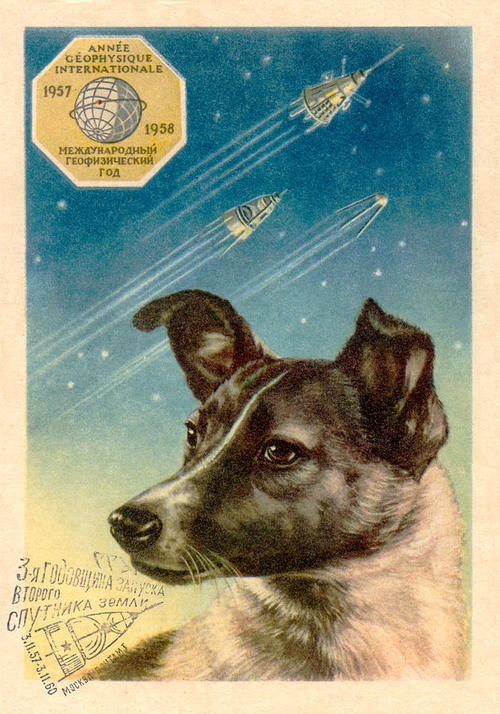Wernher von Braun standing next to the F-1 engines on the Apollo Saturn V rocket.

One of the few people in history that I both despise and admire.
He accepted membership into the SS, lied about how long he was a member of the Nazi party, built the rockets which were used on civilian targets using slave labor to do so. He then switched allegiance after the tide turned and Germany surrendered and was pivotal in getting man to the moon.
From personal accounts of people involved in the V2 program at the time, he was so obsessed with building the rockets that he didn’t care about how it was accomplished. That sounds sociopathic and is a very dangerous trait in someone as brilliant as he was.
http://m.aljazeera.com/story/2013521386874374
The Nedelin Catastrophe
In late October of 1960, nearly 200 families around the Soviet Union got letters notifying them that a loved one had died in a plane crash. It took thirty years for the public to be informed of what actually happened. It’s known as the Nedelin Catastrophe, and it’s one of the most chilling accidents of the nuclear age.
“On August 3, 1957, the Soviet Russian R-7 Semyorka missile, called “Little Seven” by the men who worked around it, flew a simulated nuclear strike trajectory, then became a space launcher just two months later, on October 4, by launching Sputnik. A great international triumph, then, but in missile terms, not necessarily the military advantage that Russia wanted.
The Semyorka used kerosene and LOX. Who in their right mind wants a nuclear missile that takes three or four hours to prime with LOX before you can launch it? Not the Soviet Red Army, for sure. So they commissioned an even more secret missile, the R-16, which, in theory, could be fueled and primed several days, or even weeks, before it was needed, with no loss of oxidizer, because its engineers had abandoned super-cold LOX and kerosene in favor of nitric acid and hydrazine: hypergolic fuels… a fuel and oxidizer combination that can be stored indefinitely at normal pressures and temperatures.
Hypergolic chemicals are efficient too. They ignite spontaneously on contact with each other and deliver a pretty good bang for your buck. Of course there’s a downside. Hypergolics are among the nastiest and most toxic substances in the rocket business. Did we mention that they can be stored? Well, sort of. They are so corrosive they will play havoc with any part of your rocket (or your people) that they come into contact with that they shouldn’t….
In October 1960, the R-16 was hoisted upright for launch at Baikonur, Russia’s ultrasecret equivalent of Cape Kennedy, based deep in the deserts of Kazakhstan. And so began the single greatest rocket disaster in history.
The R-16’s “storable” fuels wouldn’t store. They were viciously corrosive and leaky as hell, oozing from dozens of pipe joints and tank seams. On October 23, the surrounding launch gantries were crowded with young technicians trying to fix a dozen different problems. As zero hour approached, the rocket began to drip nitric acid from its base. At this point, launch director Mitrofan Nedelin should have ordered the entire gantry to be evacuated, but he didn’t seem to care about the risks. He sent yet more ground staff into the pad area straightaway, to see if they could tighten up some valves and stop the leaks and get the rocket up in the air.
Suddenly, the rocket exploded, instantly killing everyone on the gantry. With nothing to support it, the upper stage crashed to the ground, spilling fuel and flame. The new tarmac aprons and roadways around the gantry melted in the heat, then caught fire. Ground staff fleeing for their lives were trapped in the viscous tar as it burned all around them. The conflagration spread for thousands of yards, a wave of fire engulfing everything and everyone in its path. More than 190 people were killed, including Nedelin, perched on his chair near the gantry as a surge of blazing chemicals swept toward him.” (From Piers Bizony’s How To Build Your Own Spaceship)
- The deadliest launch pad accident in history.
Victims of government pressure.
Its the same kind of pressure that pushed NASA to go for a Challenger launch in near zero degree weather even though the engineers said the o-rings in the boosters would shrink, causing a burn-through and explosion.
Laika (c. 1954 – November 3, 1957) was a Soviet space dog who became one of the first animals in space, and the first animal to orbit the Earth.
Laika was a stray dog, originally named Kudryavka (Russian: Кудрявка Little Curly); she underwent training with two other dogs, and was eventually chosen as the occupant of the Soviet spacecraft Sputnik 2 that was launched into outer space on November 3, 1957, (becoming the first dog in space, to orbit the Earth, and was also the first animal to die in space.) The Soviets designed the spacecraft knowing she would not survive. One Soviet scientist took her home to play with his children because he said “I wanted to do something nice for her. She had so little time left to live.” Laika likely died within hours after launch from overheating, possibly caused by a failure of the central R-7 sustainer to separate from the payload. The true cause and time of her death was not made public until 2002; instead, it was widely reported that she died when her oxygen ran out on day six, or as Soviet government initially claimed, she was euthanized prior to oxygen depletion.
As a kid who was very into rockets and airplanes I remember being told about her (mind you, I wasn’t born until the cold war was ending), but in my childish innocence I assumed she came back okay.
Here’s a statement made by Oleg Gazenko, one of the Sputnik scientists:
“Work with animals is a source of suffering to all of us. We treat them like babies who cannot speak. The more time passes, the more I’m sorry about it. We shouldn’t have done it… We did not learn enough from this mission to justify the death of the dog.”
You know what makes me (sorta) happy? They built her a window. Despite the challenges and costs of building a secure window in a pressurized capsule, they did it so the dying dog could look out.
Source here:
Gazenko speaks of the bond that grew between the dog and him as they worked toward her mission, leading us in unembroidered prose through a brief tale of preparation, hours of readiness on the launch pad, and the launch itself. But the heart of the article for me, and the part to which nothing I’ve found since makes reference, is this: Gazenko tells us that as engineers rushed against deadlines to complete the capsule that would carry the dog into space, outfitting it with equipment to record the details of her death, he took on a battle in Laika’s behalf. Against heavy objections from the decision-makers, he insisted upon the installation of a window. A window in a space capsule, where such a luxury would cause complications and expenses that I can barely imagine. A window for the dog whose monitored demise had been this man’s objective in all the interactions that had bonded her to him with the eager devotion of every well-trained working canine.
Yet Gazenko persisted and prevailed.
Roof In Peace.





